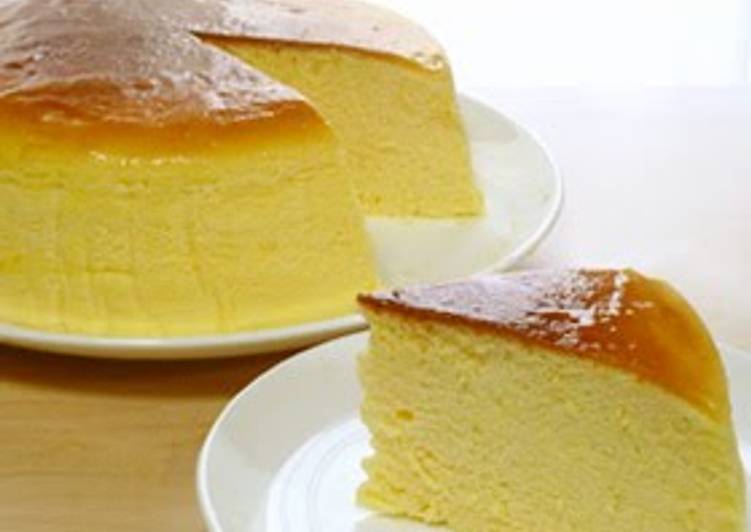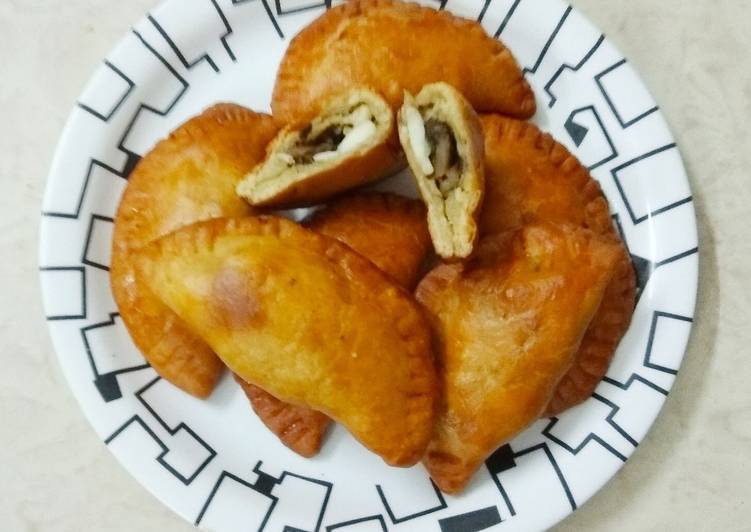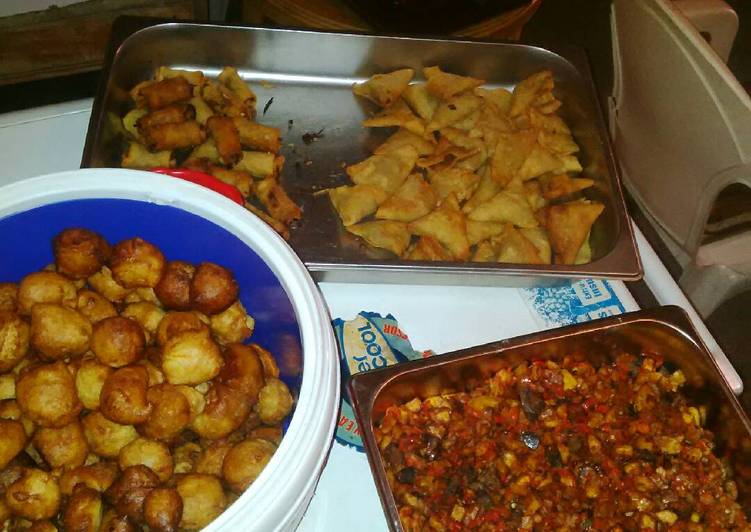
Hey everyone, I hope you’re having an amazing day today. Today, we’re going to prepare a distinctive dish, moist and fluffy soufflé cheesecake. One of my favorites food recipes. For mine, I’m gonna make it a little bit unique. This will be really delicious.
This fluffy and moist Japanese Cheesecake using meringue is very popular in Japan. It is known as Souffle Cheesecake or Cotton Cheesecake. Bring the cream cheese, sour cream and butter to room temperature and combine them in a bowl with a balloon whisk.
Moist and Fluffy Soufflé Cheesecake is one of the most popular of current trending foods in the world. It is enjoyed by millions every day. It is simple, it is fast, it tastes delicious. Moist and Fluffy Soufflé Cheesecake is something that I’ve loved my entire life. They are fine and they look fantastic.
To get started with this particular recipe, we have to first prepare a few components. You can cook moist and fluffy soufflé cheesecake using 11 ingredients and 39 steps. Here is how you can achieve it.
The ingredients needed to make Moist and Fluffy Soufflé Cheesecake:
- Take 200 grams Cream cheese
- Prepare 200 ml Milk
- Take 4 medium Egg
- Make ready 70 grams Sugar (granulated)
- Make ready 40 grams Cake flour
- Prepare 10 grams Cornstarch
- Make ready 20 grams Lemon juice
- Prepare 4 tbsp Apricot jam
- Make ready For the cake mold
- Make ready 1 Butter (Margarine)
- Prepare 1 Powdered sugar (fine granulated sugar)
Fluffy Jiggly Japanese Cheesecake. featured in American Vs. Learn to master this Japanese classic dish in your own home! Get ready to whip a lot of egg whites to create this exciting jiggly texture as well as layer in flavors like cream cheese. Japanese cheesecake or also known as cotton cake, Japanese souffle cake or pillow cake is a kind of The cake is then baked in bain marie or a hot water bath that makes it moist and jiggly.
Instructions to make Moist and Fluffy Soufflé Cheesecake:
- <Preparation> Measure and prepare all the ingredients. Combine and sift the cake flour and corn starch together. Squeeze the lemon and make lemon juice. Using spring form cake pan will be easier when removing the cake once it is ready. All pictures use an 18 cm cake mold.
- Spread butter on the sides of the cake mold, and line with parchment paper. Make sure that the paper doesn't come off while baking. (This is to prevent wrinkling while baking.) The batter will rise a lot, so let the paper exceed the edge of the mold by 2 cm. Cover the bottom of the cake mold with an aluminum foil to prevent water from seeping in when using a springform pan.
- Spread butter evenly on the surface of the paper lined in the cake mold, and sprinkle on powdered sugar evenly. No need to spread butter on the bottom part. If there are any parts left not covered with the butter and powdered sugar, it might prevent the cake from rising properly, so be precise. Make sure to spread butter and powdered sugar on the part of the paper sticking out of the cake mold. Brush off excess sugar with a brush. Store in the refrigerator until you're done with the batter.
- Separate eggs into whites and yolks. The meringue will turn out nicer if the eggs are cold, so chill the eggs until it's time to whip them up. It takes about 10 to 15 minutes, so keeping the eggs in the freezer will be just the right place to store the eggs until whipping.
- Make the cheese batter. Put milk and cream cheese in a pan. Warm up and melt the cheese but make sure that the mixture does not come to a boil (otherwise the cheese will separate). Transfer the mixture to a bowl when most of the cream cheese has melted, and mix well to dissolve all clumps. Let the mixture cool until you will be able to keep your finger in.
- Add one egg yolk at a time and mix.
- Add all egg yolks and mix well. Add 20 g of the sugar (10 g when using a 15 cm cake mold), and mix.
- Sift cake flour and corn starch into the mixture, and mix.
- Mix with a whisk to avoid the flour from clumping, and add lemon juice. Preheat oven to 340°F/170°C. Pour hot water, about 175°F/ 180°C, into the baking sheet.
- Whip up the meringue. Start whipping up the chilled egg white using the high setting on your hand mixer. Whisk for a while without adding sugar.
- When the egg white starts to form big bubbles, becomes white, and increases in volume, add 1/3 of sugar and whip it up further. When the foam of the meringue starts to become finer, add half of the remaining sugar and continue whipping.
- Continue whipping. Reduce the hand mixer level to low and make the foam finer. When the meringue becomes white and thicker, add the rest of sugar and continue whipping.
- The meringue will form peaks when you lift it up if you continue whipping. The best condition of meringue will be in between soft peak form and stiff peak form. It should not drop even when you turn the bowl of meringue up side down. Don't whip it up too much and make the meringue too tough!
- The egg white on the edge of the bowl will not be whipped up well when using an electric hand mixer, so take a whisk and mix the whole mixture together. The meringue will then become a little bit soft, so continue whipping using the whisk and adjust the softness.
- Mix the meringue into the cheese batter. Add one scoop of meringue (about 1/4 of the whole bowl of meringue) and mix well. Blend in well, not worrying about maintaining the foamy texture of the meringue.
- Then add the cheese batter mixed with meringue into the bowl of meringue. This is, because the meringue is stiff, so if you add the meringue to the cheese batter, the meringue tends to float on the cheese batter and will be difficult to blend in. Pour in about 1/3 of the cheese batter, and mix using a rubber spatula.
- Add the cheese batter to the meringue in 2 to 3 portions. Mix well after each addition. Mix well from the bottom of the bowl, so that there will not be any part left that's left unmixed. The meringue is firm, so it will maintain a foamy texture even if you mix a lot.
- Don't worry even the foam of the meringue shrinks a little. Mix well. If you keep the batter unmixed for a long time, the cake will have two layers, a hard part like a pudding and a soufflé part when you bake it, so be careful.
- Pour the batter into the cake mold. It will be like a mound if you pour the batter in slowly. The batter will be jiggly. How hard the batter becomes depends on how hard the cream cheese was at the beginning. Do not worry even the batter feels a bit loose.
- Hold the cake mold, and shake it gently to even out the surface of the batter. Remove any air bubbles that rise to the surface. Bake for 20 minutes in a 320°F/160°C oven. Make sure not to burn yourself, because there is hot water in the baking sheet. Adjust the temperature depending on the oven. It will be better if the oven temperature is on the lower side.
- Bake in a rotating system if possible. The batter will rise slowly, and will start to brown. Reduce the oven temperature to 285°F/140°C and bake for another 40 minutes. Add hot water to the baking sheet at this point if the water has evaporated.
- The cake will rise until the edge of the paper. Cover the cake with an aluminum foil if the ceiling of the oven is low and is easier to burn. If the cake rises too much, open the door and reduce the temperature (but do not open for too long). Poke a bamboo skewer through the cake and if it comes out clean, the cake is ready.
- Cool the cake down for about 5 minutes while keeping the door of the oven open to release the steam. The cake will deflate in a twinkle when you take the cake out of the oven. The small hole on the lower part of the cake in the picture is the hole from poking in the skewer… Simmer a mixture of apricot jam and water, then spread it on the surface of the cake. This will give the cake a nice glossy finish.
- Leave the cake to cool down in the cake mold. The picture shows what it looks like 20 minutes after taking it out of the oven. The final height of the cake will be about the height of the batter before baking + 1 cm.
- Look at this beautiful surface without any cracks!
- When the cake has cool down for the most part, remove the paper on the side. The bottom part of the cake will still be soft when it is hot, so it will easily break. It will be easier to remove the paper from the bottom when the cake has completely cool down.
- The flavor of the eggs might be strong when the cake is still fresh out of the oven. Let the cake sit overnight if possible to let the taste set. Then the fluffy soufflé cheese cake・soufflé fromage will be ready.
- This is what happens if don't spread butter and powdered sugar on the parchment paper. I thought maybe the surface of the cake wouldn't crack, since I'm improving my technique… but it cracked without the trick. The butter and powdered sugar on the parchment paper seems like a must.
- If baking for 50 minutes in 320°F/160℃. I thought that the surface might crack if the temperature is too high, but it was fine. It's just that the brown color became a bit dark, so you might need to cover the surface with an aluminum foil while baking… It seems that you don't need to be so nervous about the temperature for baking, however.
- *My recent lucky find. I found this disposable aluminum pan in the outdoors / camping corner of the supermarket. You can use this instead of a sheet of aluminum foil to place underneath the spring form cake pan, then you can re-use it many times. The height is a little bit high, so cut it into your desired size.
-
- For those who only have large size eggs. Calculate one egg white to weigh 30 g (120 g in total). The egg yolk amount should be fine as is, if you use all 4.
-
- If you are using a cake mold that's 18 cm in diameter, and you don't want it to be so high, use these ratios of ingredients. 50 ml cream cheese, 150 ml milk, 3 medium sized eggs, 55 g sugar, 30 g cake flour, 8 g corn starch and 15 g lemon juice.
-
- Changing the 200 ml milk into 100 ml milk and 100 ml heavy cream will make the cake richer. The calories will be higher, but I recommend this one too. You can also add a little bit of vanilla extract or liquor. You can also use yogurt instead of milk if you don't have lemon. It's a pretty rough recipe.
- How to line the mold 1: Cut and prepare paper for the bottom and for the side. You can use normal paper, which you use for baking cakes such as glassine paper or baking paper. You can also use parchment paper.
- How to line the mold 2: Spread butter or margarine on the side of the cake mold evenly. It should act as an adhesive agent so that the paper will not bend.
- How to line the mold 3: Set the loose bottom in the mold and line with paper. Line the paper on the side and stick it to the side well.
- How to line the mold 4: After lining the paper, spread butter or margarine on the paper. Spread a lot, but it will also be a problem if you spread too much…. Spreading butter or margarine on the paper sticking out of the mold will be difficult (the part where the finger is pointing in the picture), but hang in there. Make sure to not leave any part ungreased.
- How to line the mold 5: After spreading on butter or margarine, sprinkle on powdered sugar. Be careful not to remove the lined paper from the mold. Use a brush and make sure that the sugar is spread even in the corners. Remove excess sugar, and that is it. Store in the refrigerator to keep it cool.
- Addendum: Here's a trick to prevent cracking. First bake in 300°F/150°C for 30 minutes and then open the oven door for about 5 seconds to release the steam, close the door again, turn off the oven and let the cake steam for 30 minutes. Poke a bamboo skewer through the cake and if the cake is not yet fully cooked, do not take it out of the oven. Instead, turn on the oven again and bake for 10 minutes in 320°F/160°C.
Try this Japanese Cheesecake or cotton cheesecake recipe for a super fluffy, light-as-air and heavenly. This fluffy, soufflé-style baked cheesecake is hugely popular in Japan for its moist and smooth texture that is far lighter than many baked cheesecakes. The cheesecake should have shrunk back away from the sides of the tin and reduced in height evenly, without sinking in the middle. These Fluffy Japanese Souffle Pancakes are like eating cottony clouds, but even better with Souffle Pancakes are all about the eggs. Egg yolks and egg whites are separated, and the whites are Very different from American toasts (dry and not moist at all)… I assume European toasts are similar to.
So that’s going to wrap this up with this exceptional food moist and fluffy soufflé cheesecake recipe. Thanks so much for your time. I’m sure that you will make this at home. There is gonna be more interesting food in home recipes coming up. Remember to bookmark this page in your browser, and share it to your family, friends and colleague. Thank you for reading. Go on get cooking!


